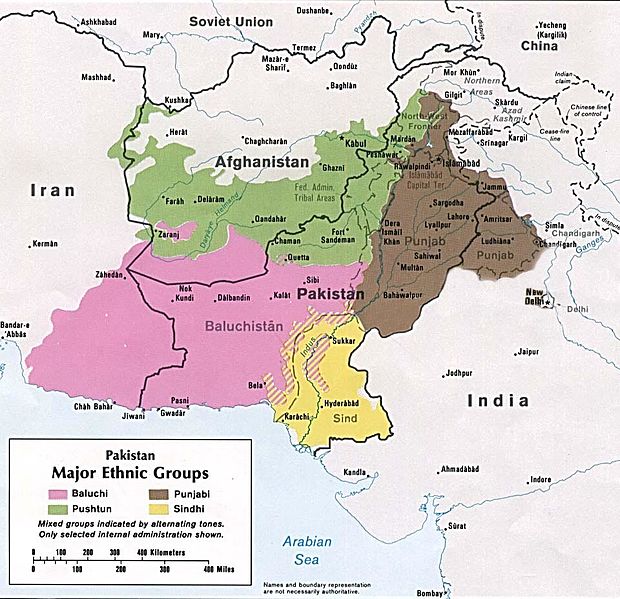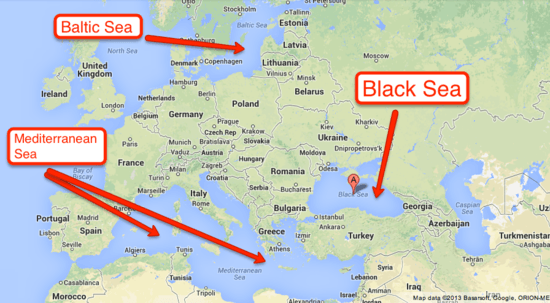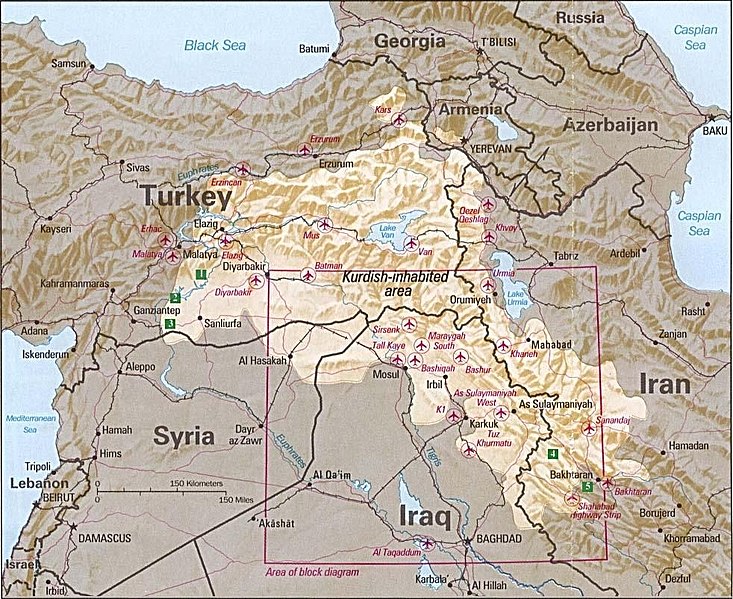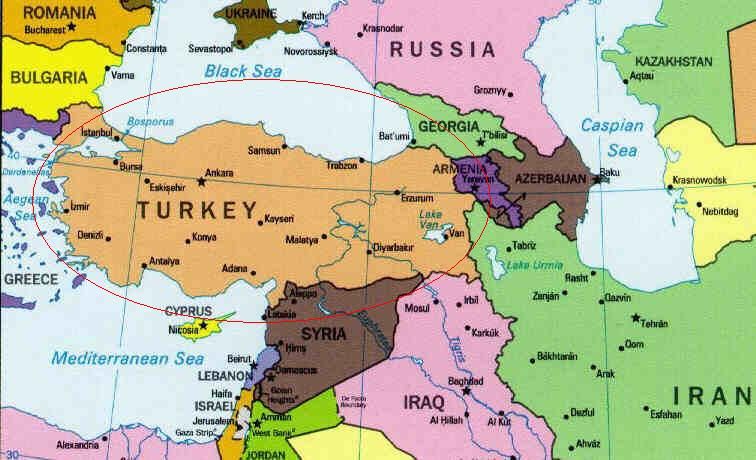1.Where this era began
Go back to 2001 when the current era in US Defense began. Remember where we entered that era? That Afghanistan was remote without any real American presence not just in Afghanistan but even in its periphery. Yet in a short period of time, the US defeated the Taleban & sent them packing back to their lair in NaPakistan.
How? The US worked with the Northern Front in Afghanistan, a collection of minorities comprised of Tajiks, Uzbeks & Hazara tribes. They had a ready force of fighters & US had the planning & the air force to blow away the Taleban forces. That conflict was over in a short period of time.
What did the US do then? They recognized that to rule Afghanistan, you need the Pushtuns, the biggest ethnic group in Afghanistan & the biggest contributor to the Taleban. And to get Pushtuns, the US needed to sideline the Uzbeks, Tajiks & the Hazara groups that had been indispensable to getting rid of the Taleban. Then, with the help of Iran, the US installed Pushtun Hamid Karzai as the President of Afghanistan.
That is what geopolitics & national interests mean – the need to focus on the future, both near & medium-term.
2. Kurds & Islamic State in Syria
That brings us to the Kurds. Just as the wrath of the Taleban was first directed at the Tajik, Uzbek & Hazara groups, the wrath of ISIS first fell on the Syrian Kurds. So the Syrian Kurds had a choice – to run away from their homeland or to fight. They decided to fight &, in an earthly parallel to the old saying God only helps who help themselves, the modern god of foreign policy & military intervention helped Syrian Kurds in their war against ISIS.
Actually the modern god of Middle East intervention had no other choice but to help the Syrian Kurds. Assad had been declared as a savage barbarian & he had already been won over by the Russians & Iranians. At the other end you had Turkey which, as many believed, had actually funded & helped in the rise of ISIS.
So a joining of US airpower & US special forces with local Kurdish fighters on the ground was a match made in Middle Eastern geopolitical heaven. And it worked just as the joining of US airpower & special forces with local Northern Front fighters on the ground had worked in 2001 in Afghanistan.
And the end of that effort is now proceeding similarly. Just as the Afghani minorities were sidelined by the US after that battle, the Syrian Kurds were sidelined last week by the United States. It is a naturally human & consistently strategic development.
3. Pushtuns vs. Kurds; Afghanistan vs. Syria
Just look at the green area below to see how geographically homogeneous the Pushtuns are.
 Yes, they are divided across the artificial British-imposed line of control in 1893. But geographically & culturally they are homogeneous. That is why the US can never establish peaceful conditions in Afghanistan without seizing control of South Pushtunistan that is currently occupied by nuclear-armed NaPakistan. And the US has neither the desire nor the overwhelming geopolitical necessity to do so.
Yes, they are divided across the artificial British-imposed line of control in 1893. But geographically & culturally they are homogeneous. That is why the US can never establish peaceful conditions in Afghanistan without seizing control of South Pushtunistan that is currently occupied by nuclear-armed NaPakistan. And the US has neither the desire nor the overwhelming geopolitical necessity to do so.
Also no other country can enter Pushtunistan without an enormous effort. Shiite Iran can enter the white areas of Afghanistan but not the green Sunni Pushtun areas. The Central Asian countries of Uzbekistan, Tajikistan & Turkmenistan are too weak to intervene in Afghanistan.
Contrast the above with the dispersed Kurds. So while US officials can quasi-sensibly imagine an irredentist Pushtunistan, no one can even imagine a united Kurdistan across Turkey, Syria, Iraq & Iran. And unlike the Pushtuns, the Kurds themselves do not demonstrate a joint identity. Even the neighboring Iraqi Kurds & the Syrian Kurds have not been able to think together, let alone work together:
And unlike Pushtunistan, the area of the Syrian Kurds is enclosed by real states that can actually intervene. First & foremost is Turkey as Erdogan demonstrated this week. Second is Assad in Damascus since his victory in the Syrian Civil War. Third is Iran which played a big role in securing victory for Assad. And last but not the least you have Russia & its airpower.
The above reality is why both Russia & the US have been urging the Syrian Kurds to make a deal with the Syrian Government in Damascus. The Kurds have been unwilling because of their mistaken belief that the US will help them get their own independent state. They had to be woken up & told in the clearest of terms to stop dreaming. They had to be told to not rely on an endless US presence to protect their semi-independence.
4. President Trump
The Pushtuns have been fighting a deadly war since 1893 when Pustunistan was partitioned by the British. The Soviets killed over a million of them with air strikes but that didn’t stop them from fighting. Contrast this with the Kurds who stopped fighting Saddam after he massacred 30,000 Kurds. That is why President Trump can simply pull up & leave Syria.
He did & by doing so, he disrupted the political calculations of all the other players. First & foremost of Russia. Putin & Lazrov were happy playing a double game under US protection. Turkey was angry with the US for foiling their desire to take control of their border area with Syrian Kurds. So Erdogan was getting tactically closer to Russia & buying S-400 system from them. And Russia has always wanted to get Turkey as an ally because Turkey, an emerging regional power, controls the entry of the Russian Navy from the Baltic Sea into the Mediterranean.
 Just as British Gibraltar is a bottleneck for the Mediterranean, Turkish Istanbul is the bottleneck for the Baltic Sea which is a quasi-Russian lake. Remember Britain might exit the EU, but they have refused to give up Gibraltar & even threatened war with Spain if Spain tries to take over Gibraltar.
Just as British Gibraltar is a bottleneck for the Mediterranean, Turkish Istanbul is the bottleneck for the Baltic Sea which is a quasi-Russian lake. Remember Britain might exit the EU, but they have refused to give up Gibraltar & even threatened war with Spain if Spain tries to take over Gibraltar.
Now that US had virtually left Syria & the Syrian Kurds have virtually made a deal with Assad, Syria & Turkey are on opposite sides of the Syrian Kurdish region. Does Russia have to choose between Assad & Erdogan? Russian plans now have to be rethought & rethought. Syria & Turkey are historical enemies & so mediating between Assad & Turkey is very very hard. Russia could lose trust of both sides, assuming it had much to begin with.
Now look at Turkey from the other side:
First on the scale of power & reach you have Iran, a perennial adversary of Turkey in Arabistan. Both Iran & Turkey are non-Arab players in Syria & Iraq. And their interests are diametrically opposite. Rise in the influence of one in Syria directly reduces the influence of the other. Not just Syria but the Northwestern part of Iraq that is mostly Kurdish. That is another area where Turkish & Iranian forces collide.
Then you have the Sunni Arab lands from Jordan to Kuwait to Saudi Arabia & the UAE. These were the funders of the civil war against Assad. But that is old history & like most things in the Middle East not relevant right now. Today Assad’s Syria represents, thanks to US withdrawal, the bulwark of Arab resistance to Turkey’s encroachment into Arabistan. And a Turkey-Iran struggle is good for the Sunni Arabs to reassert Arabian influence in Syria.
The last 10 years were dominated by religious feud – Sunni Arabs funding ISIS & Al-Qaida against Shia-Alawite regimes. Now, thanks to US withdrawal, the feud will revert back to race – Arab regimes (both Sunni & Shia) vs. ethnic non-Arab Turks & vs. Persian Iran.
This is good for America. America has little interest in the internecine feud between Arabs, Turks & Persians. And none of these countries have the firepower to do grave damage to US interests, to Israeli interests or to joint US-Israeli interests.
You could blame President Trump for not using the old lengthy Washingtonian process. But smarts & the big picture have never come out of process. Kudos to President Trump for getting out of Syria. Smart, very smart.
5. Getting out & a Bird’s Eye View
It is amazing how one’s vision clears when one gets out of the swamp to higher ground. Now that America is virtually out of Syria & its ground role, we can look at the region with a new top-down vision.
America’s critical interests are no longer within the region called the Middle East. They reside in how the main players radiate out of that swamp. Who are the main players? The first is Turkey.
- Turkey – Don’t look at Turkey from the Arab side. Instead focus on Turkey from the European & the Black Sea side. Remember how America forgot about Japan’s actions in WWII & made Japan an ally mainly because Japan blocked the access of the Russian Navy from Vladivostok into Asia. Look at the map above to recall how Turkey blocks the access of the Russian Navy from the Baltic Sea into the Mediterranean. Look across the Black Sea from Turkey and you will see Crimea, the part of Ukraine re-annexed recently by Putin. Just like Japan, Turkey is an ancient empire capable of some renaissance & a very useful strategic ally of US.
For the second, look across the Mediterranean from Turkey.
- Israel-Egypt-Saudi & GCC – This is now actually an alliance and an entirely pro-US one. A Turkey caught in a Syrian swamp & pitted against Syria is excellent news for Israel & Egypt. Egypt, the old leader of the Arab World, detests Turkey & Erdogan. Saudi Arabia has been taught a very nasty lesson in Yemen and so Saudi will turn their attention towards Iran & Turkey. With this alliance comes Jordan & possibly a Syria that needs money & Arab help against Turkey. Is there a chance Assad will turn completely away from Iran? Perhaps in a few years & that might finally be the peak of Hezbollah & the mess in Lebanon. All very pro-US without the US having to shed any blood or even spend money.
That brings us to Iran. Every one looks at Iran from the South, meaning the Persian Gulf. Now take a look at Iran from the Northwest. This is Kurdistan where the Russian Caucasus, Turkey, Iraq & Iran meet. This is the area that made Iran historically wary of Russia.
Yes, Iraq is now dominated by Iran. But for how long? Iran has earned its role in Iraq not just by fighting ISIS (an old story now) but by funding Iraq. That funding is now running slow & small thanks to US sanctions against Iran. And what are you seeing in Iraq? Riots in the streets not on Shia-Sunni religious issues BUT on bread, butter & jobs issues. Go across Syria to Lebanon, another recipient of Iranian funds. Beirut erupted in riots this week & in the previous weeks. Why? Bread, butter & jobs. So Iran is learning that dominance comes from money & Iran hardly has any.
So the United States has & can have a lot more influence in the Middle East from the outside than from spending blood & money of Americans inside on the ground.
Since we began with 2001, let us end with 2001 & the words of George Friedman of Geopolitical Futures:
- “The world has changed greatly since 2001. China has emerged as a major power, and Russia has become more active. Iran, not Sunni jihadists, has become the main challenge in the Middle East and the structure of alliances needed to deal with this has changed radically since Desert Storm and Iraqi Freedom.”
- “For now, the Islamic State is vastly diminished, as is al-Qaida. The Sunni rising in Iraq has ended, and even the Syrian civil war is not what it once was. A war against Iran has not begun, may not happen at all, and would not resemble the wars that have been fought in the region hitherto.”
Given all this, while the eruption of joint Democrat & Republican tumult in Washington DC?
6. Has a New Era Begun?
Everyone should watch the movie Lincoln. It provides the best lesson in how America comes to a decision. The level of passion on both sides of a debate, the level of vitriol is bewildering & very scary to countries & people that are dependent on America. Every major decision in America finally comes out of the victory in an internal civil war, even the physical civil war between American North & South.
How does that apply to the enormity of vitriol & seemingly bipartisan anger at President Trump for his withdrawal from Syria? Since we haven’t spent any time inside Washington DC, we looked to Dr. George Friedman of Geopolitical Futures for clues:
- “The strategic origin [of the withdrawal from Turkey] is a clash between elements of the Defense Department and the president. The defense community has been shaped by a war that has been underway since 2001…. A generation of military and defense thinkers have matured fighting wars in the Middle East. The Long War has been their career. Several generations spent their careers expecting Soviet tanks to surge into the Fulda Gap. Cold Warriors believed a world without the Cold War was unthinkable. The same can be said for those shaped by Middle Eastern wars.”
- “It is difficult to accept that an era has passed into history. … The same has happened in different ways in the Middle East. The almost 20-year deployment has forged patterns of behavior, expectations and obligations not only among individuals but more institutionally throughout the armed forces. But the mission has changed. This inevitably generates a strategic re-evaluation, which begins by accepting that the prior era is gone.”
- “But after the 18 years of war, two things have become clear. The first is that the modest objective of disrupting terrorism has been achieved, and the second is that the ultimate goal of creating something approaching liberal democracies was never really possible.“
All this is fine. We understand the passion of the joint NeoCon-NeoLib cabal. But don’t you need an opposing faction to create a civil war? As Dr. Friedman points out,
- “There is another, increasingly powerful faction in the United States that sees the Middle East as a secondary interest. In many instances, they include Iran in this. This faction sees China or Russia (or both) as the fundamental challenger to the U.S. Its members see the Middle East as a pointless diversion and a drain of American resources. … For them, bringing the conflict to a conclusion was critical. Those who made their careers in this war and in its alliances were appalled. The view of President Donald Trump has been consistent.”
It is this “consistency”, this refusal to fall in line with the destructive NeoCon-NeoLib “military intervention above all” faction that made us write our first pro-Trump article on October 31, 2015. Two excerpts below from that article titled Is Donald Trump Right About Foreign Policy?
- “Enter Donald Trump, the only Republican candidate who is tune with the American people in putting America first. Most people can see that but very few have noticed the boldest and smartest departure of Trump from the rest of the Republican pack.“
- The only Republican candidate who can think along the above lines is Donald Trump. The rest of the Republican field is dedicated to current polarization between NeoLibs & NeoCons. That is why even those who can’t stand Donald Trump like this FP writer are asking for a closer look at Trump’s foreign policy views. If left-wing writers feel compelled to look at Trump, can Middle America be far behind?
First Middle America not only looked at Candidate Trump in late 2015 but they rose en masse to elect him to be their President in November 2016. But as we are all witnessing now, both NeoCon Republicans and NeoLib Democrats are still united in their joint quest to remove him as the Champion of Middle America.
Yes, this joint “bipartisan” war lobby has enormous money & deep resources in this fight. But do they have the American people with them? We don’t think so now just as we didn’t think so in October 2015.
Send your feedback to [email protected] Or @MacroViewpoints on Twitter

